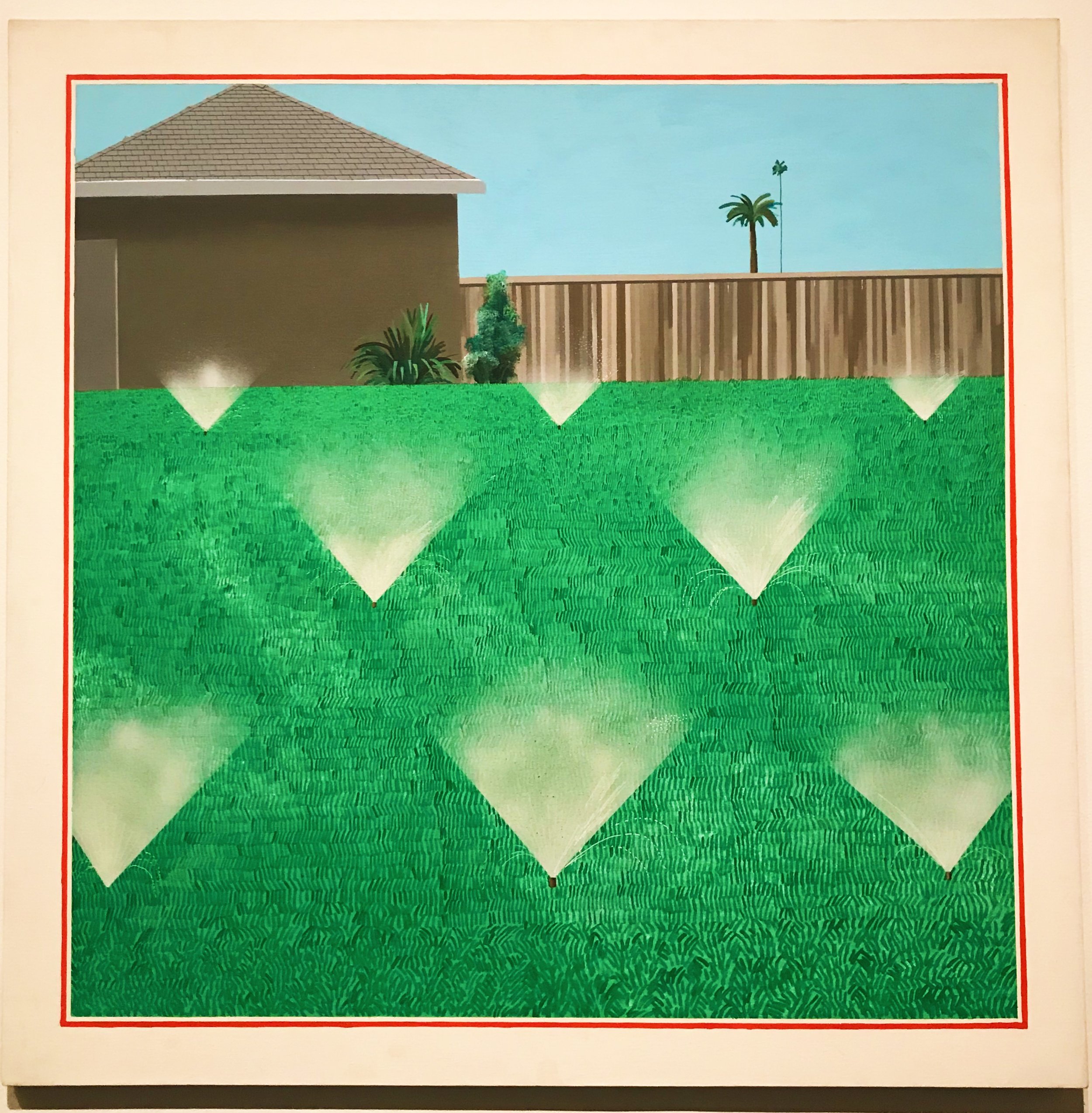Master of Change: British artist David Hockney on display at the MET
Photo by Savannah White
A collection of artist David Hockney’s work is being showcased by the Metropolitan Museum of Art. The exhibition features an expansive retrospective of the artist’s diverse work, honoring iconic moments of his career. This is Hockney’s only exhibition in North America and will be on display until Feb. 25.
Hockney is recognized as the most influential British artists of all time, with a career spanning nearly 60 years. This exhibition expertly showcases Hockney’s variable artistry from 1960 to the present, showing his mastery of a variety of artistic mediums.
“California in my mind was a sunny land of movie studios and beautiful, semi-naked people.”
Much of the content of his works brazenly depicts homoerotic subject matter, figuration and a drive to overturn societal and artistic conventions. As his career grew, his work morphed as well. Hockney examines and questions how to capture movement, time, space and dimensions through landscapes, portraits, abstract paintings, photography and video works. He has touched nearly every corner of the art world from modernism to abstraction to realism and even illusionism. In recent years, he now uses an iPad to create digital paintings.
His most recognizable paintings are of luminous 1960’s California pools and backyards. The color palette is pale and the style is straight-edged and detailed.
“California in my mind was a sunny land of movie studios and beautiful, semi-naked people,” he said. He has lived in Southern California off and on for over 50 years.
Photo by Savannah White
It was in Los Angeles in the 1960’s he began to fully refine his artistic practice and reach international acclaim. But, he hadn’t started there.
He was born in Yorkshire and studied at the Royal College of Art in London. While he was there, he began to lay the foundation for his quirky, yet impressive personal artistic style. He grew interested in incorporating symbols of personal experiences, love and desire into his paintings.
“The Cha-Cha That Was Danced in the Early Hours of 24th March,” depicts a party in which he watched a fellow student dance. In graffiti-style, which the inspiration can be sourced from the bathrooms of London, the words “penetrates deep down” are written intertwining the abstract character on the move.
In the 1960’s, his work began to take a more explicit and controversial turn. His burgeoning gay identity is evident in “Cleaning Teeth, Early Evening (10pm),” in which he unabashadley depicted homosexuality. By replacing toothpaste tubes for genitalia he is simultaneously stating his view in a comic, light-hearted manner and giving a nod to the Pop art’s fascination with household objects, which was at full swing at this time.
But for all the criticism he received, his acclaim and popularity doubled. He has managed to master what many artists often fail to do—grow with their art as the culture around them changes. It is evident he isn’t afraid to experiment and take on challenges.
From pools to abstract landscapes of the desert southwest incorporating photographs, Hockney then took to a new venture--portraits.
The MET contains five of Hockney’s majestic and unique double portraits. Nearly life size, these paintings depict his friends and acquaintances in highly-structured and dramatic compositions. They are naturalistic, yet the composure is tense and formal, often incorporating the geometric clarity and modernist style found in his previous paintings of Californian pools and homes.
But, Hockney didn’t just limit himself to painting, in the 1980’s he also designed sets for a number of major opera companies around the world. Works such as “Garden #3” further attest to the diversity of his artistic talent with Picasso inspired abstraction and cubism with bright, vivid coloring.
With the invention of the iPhone and iPad in the 2000s, he began to paint using digital technology. In his home in Yorkshire, he kept an iPad at his bedside table in order to paint exactly what he saw every morning. In the exhibit, three televisions play recordings of these digital paintings in bright, mesmerizing colors.
Within the past few years, he has moved back to Los Angeles and produced a new series of acid-hued paintings. These paintings attest to Hockney’s emphasis on the expansion of perspectival space. Now in his 80’s, Hockney shows no signs of slowing down. A master of artistic change, he continues to push boundaries wherever and whenever possible.


